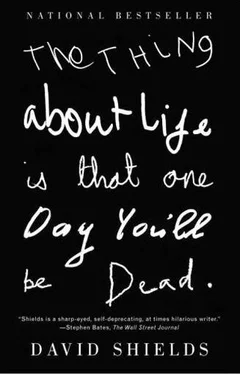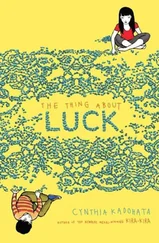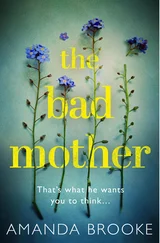As the August mating season nears for the male marsupial mouse, its testosterone levels build steadily higher, reaching a peak in late July. The adrenal glands enlarge, sending elevated levels of hormones into the bloodstream. Males enter a state of extreme physiological excitement and stress. They engage in violent battles with one another for the opportunity to mate with the females. After mating, the males have—in addition to the scars from the battle—stomach ulcers that bleed severely. Their immune systems are so decimated that they easily fall prey to parasites. Nearly all of them will die in the course of the next few days. The females survive to raise and suckle their fatherless young, but they, too, are extremely fragile. Only a few females survive to breed again the following year.
A boy’s first ejaculations are nocturnal emissions: uncontrolled and unprompted acts. A boy’s body mechanically begins the process of sexual reproduction without much if any input on his part. And it’s fundamentally similar with girls (granting obvious, important differences). Before you are even really used to being alive and moving around in the world, much less have any understanding of yourself, your body’s already starting the reproductive process.
For most of human history, people mated as teenagers and conceived their first child by age 20. When anthropologist Suzanne Frayser studied 454 traditional cultures, she found that the average age for brides was 12 to 15; for grooms, 18.
In the last 30 years, the suicide rate has doubled among American children and adolescents; it’s the third leading cause of death in youth. The tumult of hormones is, for some teenagers, too much, e.g., a hugely disproportionate number of school shootings occur in spring.
Hoop dream (vi):
My junior year of high school, a month before I broke my leg, while we dressed for our first league game, our coach, Mr. Rossi, stood at the blackboard in the locker room, shaking and crumbling chalk. At first we thought he was just trying to get us psyched up. He stubbed his toe on the bench. We got on our road uniforms and tube socks and assumed maybe Mr. Rossi had had a taste or two too many. Then he burst out with it.
“Dicky Schroeder,” he said. And we all realized: where the hell was Dicky, home with a head cold when we had Lincoln at Lincoln? Give him a couple of aspirin and send him over there in a cab, right, Mr. Rossi?
“Dicky had a bad accident in his garage last night. His parents said it wasn’t an accident. Dicky’s not with us any longer.”
We closed our lockers. It took us a while to grasp what Mr. Rossi said, and it took us the rest of the year for it to sink in. Dicky Schroeder smoked Raleighs and drove a souped-up Chevy. He was always buying new clothes and car accessories and bullshitting you about getting laid. He was too busy to kill himself.
Around a week later, the school paper ran an obituary, quoting people saying what a solid student he’d been, which was an insult to everyone’s intelligence. The article finished up with a quote from Ralph Waldo Emerson saying, “Death isn’t an ending; it’s only a transition,” which did everyone a lot of good, knowing Dicky wasn’t gone forever: he was just running the transition game.
Immediately after Mr. Rossi told us Dicky had committed suicide, he asked us if we wanted to play the game and, to his surprise and perhaps our own, we all said yes. No one talked on the bus to the game and none of us took warm-ups. Once the game started, we all tried to play like Dicky, looking to pass, working the give-and-go. Everyone was looking for the open man, and the open man was Dicky. We were all hoping to wake up and find out he was only kidding. If we all tried to play like him, maybe he’d pop out from under his garage door and show us how to run the three-on-two. The play I’ll remember until I’m 90 was Brad Gamble, our star, all alone on a breakaway, me trailing. He stopped and set the ball down on the floor for me to pick up. I looked for someone to follow after me; I kept waiting, but no one came. I banked it off the board, and we won in a romp.
If you could live forever in good health at a particular age, what age would you be? As people get older, their ideal age gets higher. For 18-to 24-year-olds, it’s age 27; for 25-to 29-year-olds, it’s 31; for 30-to 39-year-olds, it’s 37; for 40-to 49-year-olds, it’s 40; for 50-to 64-year-olds, it’s 44; and for people over 64, it’s 59.
Your IQ is highest between ages 18 and 25. Once your brain peaks in size—at age 25—it starts shrinking, losing weight, and filling with fluid. In a letter to his father, Carlyle wrote that his brother, Jack, “decides, as a worthy fellow of twenty always will decide, that mere external rank and convenience are nothing; the dignity of mind is all in all. I argue, as every reasonable man of twenty-eight, that this is poetry in part, which a few years will mix pretty largely with prose.” Goethe said, “Whoever is not famous at twenty-eight must give up any dreams of glory.”
When I was 31, I was informed that someone had written, in a stall in the women’s bathroom in a bookstore, “David Shields is a great writer and a babe to boot.” This is pretty much the high point of my life, when my acne was long gone and I still had hair and was thin without dieting and could still wear contacts and thought I was going to become famous. (Just recently, looking for compliments, I asked my father what he thought of what I’ve become, and he said, “You were such a great athlete as a kid. I thought sure you were going to be a pro basketball player or baseball player.”) Sir William Osler said, “The effective, moving, vitalizing work of the world is done between the ages of twenty-five and forty.” Which is in fact true: creativity peaks in the 30s, then declines rapidly; most creative achievements occur when people are in their 30s. Degas said, “Everyone has talent at twenty-five; the difficulty is to have it at fifty.” The consolation of the library: when you’re 45, your vocabulary is three times as large as it is at 20. When you’re 60, your brain possesses four times the information that it does at 20.
Your strength and coordination peak at 19. Your body is the most flexible until age 20; after that, joint function steadily declines. World-class sprinters are almost always in their late teens or early 20s. Your stamina peaks in your late 20s or early 30s; marathon records are invariably held by 25-to 35-year-olds.
When you’re young, your lungs have a huge reserve capacity; even world-class athletes rarely push their lungs to the limit. But as you age, your lungs get less elastic: you can’t fill them as full or empty them as completely of stale air. Aerobic capacity decreases 1 percent per year between ages 20 and 60.
“It isn’t sex that causes trouble for young ballplayers,” Casey Stengel said. “It’s staying up all night looking for it.”
“During the summers of 1938 and ’39,” my father wrote in a piece for his class, “I worked as a keeper of the tennis courts and occasionally as tennis instructor at Chester’s Zunbarg—Sun Hill—a small, 120-capacity resort in the Catskills Mountains 80 miles northeast of New York City. The first day of that first summer, Anne Chester briefed me on the job I was about to step into at her hotel: ‘The salary is small—just $200 for the summer—and I apologize for it, but the fringe benefits more than make up for it.’
“What fringe benefits?” I asked in my youthful ignorance.
“It won’t take long for you to find out what they are,” she said, with a sly wink.
Twenty-four hours later, a sultry brunette walked up to me on the courts and asked if I gave tennis lessons.
Читать дальше












